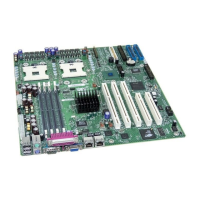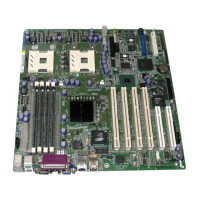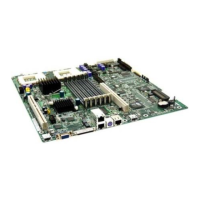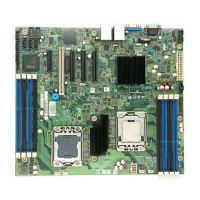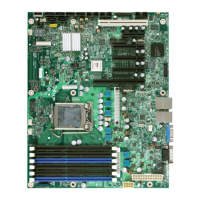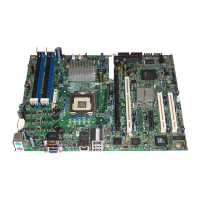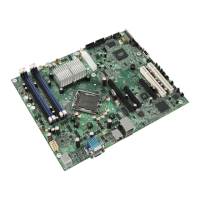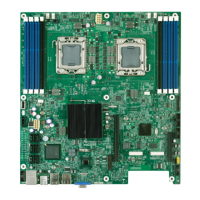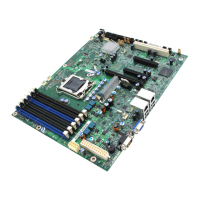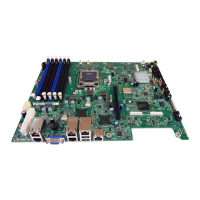Intel® Server Board SE7520BD2 Technical Product SpecificationPlatform Management Architecture
Revision 1.3 Intel Confidential
71
including the front panel Power Button, the baseboard RTC alarm signal, and power on
request messages from the auxiliary IPMB connector and PCI SMBus.
• Onboard NICs that support IPMI-over-LAN and LAN Alerting, Wake-On LAN, and Magic
Packet* operation.
• Emergency management port
• IPMB
• PCI SMBus in addition to certain logic and private buses used for power control
• ICMB Transceiver card (if present)
• IPMB isolation circuit
• System Status LED on the front panel
• System Identify LED
4.1.3 IPMI Messaging, Commands, and Abstractions xxx
The IPMI specification defines a standardized, abstracted, message-based interface between
software and the platform management subsystem, and a common set of messages
(commands) for performing operations such as accessing temperature, voltage, and fan
sensors, setting thresholds, logging events, controlling a watchdog timer, etc.
IPMI also includes a set of records called Sensor Data Records (SDRs) that make the platform
management subsystem self-descriptive to system management software. The SDRs include
software information, such as how many sensors are present, what type they are and what
events they generate. The SDRs also include information, such as minimum and maximum
ranges, sensor type, accuracy and tolerance, etc., that guides software in interpreting and
presenting sensor data.
Together, IPMI Messaging and the SDRs provide a self-descriptive, abstracted platform
interface that allows management software to automatically configure itself to the number and
types of platform management features on the system. In turn, this enables one piece of
management software to be used on multiple systems. Since the same IPMI messages are
used over the serial/modem and LAN interfaces, a software stack designed for in-band (local)
management access can readily be re-used as an out-of-band remote management stack by
changing the underlying communications layer for IPMI messaging.
4.1.4 IPMI ‘Sensor Model’
An IPMI-compatible ‘Sensor Model’ is used to unify the way that temperature, voltage, and other
platform management status and control is represented and accessed. The implementation of
this model is done according to command and data formats defined in the Intelligent Platform
Management Interface Specification.
The majority of monitored platform elements are accessed as logical ‘Sensors’ under this
model. This access is accomplished using an abstracted, message-based interface (IPMI
messages). Instead of having system software access the platform monitoring and control
hardware registers directly, it sends commands, such as the Get Sensor Reading command, for
sensor access. The message-based interface isolates software from the particular hardware
implementation.
System Management Software discovers the platform’s sensor capabilities by reading the
Sensor Data Records from a Sensor Data Record Repository managed by the management
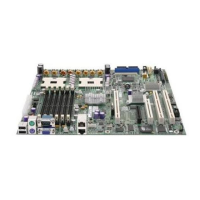
